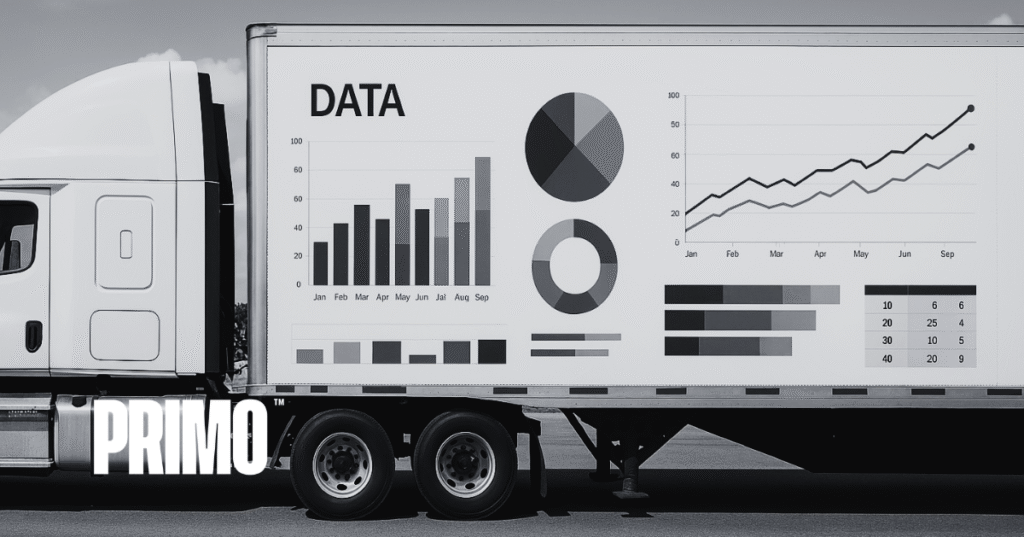
Logistics leaders face a pivotal year in 2025. Technology, labor instability, and rising customer demands are pressuring businesses to rethink how they route freight, allocate resources, and maintain visibility across the supply chain. One critical move? Re-evaluating how you manage your freight to stay agile and minimize risk. Companies that adapt quickly will reduce cost exposure and build greater resilience across their logistics networks. According to Landline Media, “Nearly 70,000 trucking jobs were eliminated from the economy in 2023 and 2024, up from the initially reported 41,000 jobs.” Trends shaping the year ahead aren’t just passing headlines—they signal major shifts in how logistics will be executed and measured. Now is the time to prepare.
Building resilient supply chains is more critical than ever due to ongoing global disruptions. Companies are focusing on strategies to enhance stability and reduce vulnerabilities to ensure continuous operations. Shippers are increasingly investing in diversified networks and emphasizing local sourcing to mitigate risks. By reducing reliance on a single source or geographic location, businesses can enhance supply chain resilience. For example, companies like Toyota have adopted a multi-supplier strategy to avoid production halts due to supplier issues. Local sourcing also helps in decreasing lead times and improving response to market demands. Businesses in furniture logistics are also adopting similar strategies to enhance their supply chain resilience.
Artificial intelligence is revolutionizing logistics planning by providing predictive insights and optimizing operations. This technological shift is reshaping how companies approach routing, capacity management, and overall supply chain optimization. The integration of AI and machine learning into logistics is transforming decision-making processes. AI-driven tools can predict demand fluctuations, optimize inventory levels, and improve transportation management, resulting in more efficient operations. One global logistics leader has integrated AI to automate their sorting processes, improving both speed and accuracy. Businesses can further improve their FTL efficiency by leveraging these advanced tools.
Sustainability is no longer just a compliance requirement; it has become a strategic cost advantage. Companies are focusing on efficiency-first green logistics to drive down costs and enhance their brand image. By optimizing logistics processes, companies can reduce waste, lower emissions, and decrease energy consumption, all of which contribute to cost savings. Nike, for example, has implemented a closed-loop supply chain to minimize waste and improve sustainability. Sustainability initiatives are helping reduce the overall supply chain cost-to-serve. By analyzing the environmental impact of logistics operations, companies can identify areas for improvement and implement changes that lead to both environmental and financial benefits.
Labor shortages in logistics are accelerating the adoption of automation and robotics. Companies are investing in technology to maintain productivity and manage operational risks effectively. Automation is being leveraged to address labor gaps in warehousing, with robotic systems used for tasks such as picking, packing, and sorting. Amazon’s use of robotics in their fulfillment centers has set a benchmark for automation in warehousing. Over-the-road operations are increasingly relying on automated solutions to streamline processes. Technologies such as autonomous vehicles and advanced telematics are enhancing transportation management, reducing the need for manual intervention and increasing efficiency.
Full-track transparency has become essential in logistics, with customers demanding real-time visibility. This trend is driving the adoption of advanced supply chain analytics and end-to-end visibility solutions. End-to-end visibility is no longer a differentiator but a necessity for modern logistics. Businesses are implementing technologies that provide real-time tracking and monitoring, enabling them to react swiftly to changes and maintain control over their supply chains. Improved visibility enhances customer satisfaction and operational efficiency by enabling proactive management. With real-time data, companies can anticipate issues and make informed decisions, leading to better service levels and optimized operations.
Technology is empowering smaller carriers to compete effectively in a volatile market. The democratization of tech access is leveling the playing field, allowing these carriers to leverage digital freight brokerages and other innovations. The rise of tech-first capacity sourcing is benefiting smaller carriers. By using digital platforms, they can access a broader range of opportunities and compete with larger players on an equal footing. Companies, including PRIMO, are offering platforms that connect smaller carriers with shippers, expanding their market reach. Smaller carriers are adopting strategies for managing demand fluctuations effectively. By utilizing supply chain optimization tools, they can adjust quickly to changes in demand, ensuring they meet customer needs without overextending resources.
Advanced supply chain planning and optimization tools can significantly enhance logistics operations. By adopting innovative solutions, businesses can gain a competitive edge in the market. Real-world examples illustrate how companies have successfully integrated these technologies to improve efficiency, reduce costs, and enhance supply chain resilience. As the logistics landscape continues to evolve, embracing these advanced solutions will be crucial for staying ahead. Reach out to a PRIMO team member to begin transforming your logistics operations today.